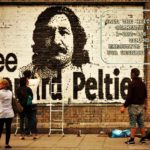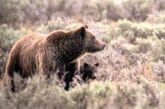Watch the documentary Dakota 38, that follows Native riders on a 330 mile healing journey across South Dakota to Minnesota, in honor of those lost 159 years ago at the end of the Dakota War of 1862, in the largest mass execution ever seen in the United States.
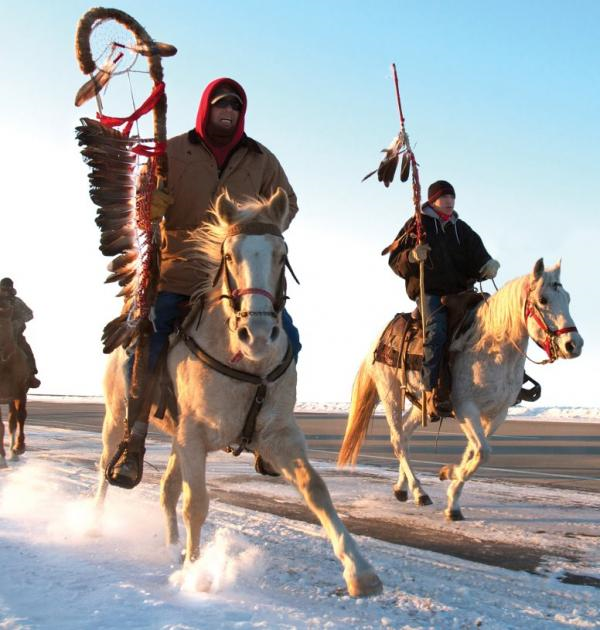

Dakota Nation Healing and Reconciliation on Horseback
In the spring of 2005, Jim Miller, a Native spiritual leader and Vietnam veteran, found himself in a dream riding on horseback across the great plains of South Dakota. Just before he awoke, he arrived at a riverbank in Minnesota and saw 38 of his Dakota ancestors hanged. Miller dismissed the vision at first. At the time, Jim knew nothing of the largest mass execution in United States history, ordered by Abraham Lincoln on December 26, 1862.
Miller says in the film: “When you have dreams, you know when they come from the creator. As any recovered alcoholic, I made believe that I didn’t get it. I tried to put it out of my mind, yet it’s one of those dreams that bothers you night and day.”
After four years later, embracing the message of the dream, Jim and a group of riders retraced the 330-mile route of his dream on horseback from Lower Brule, South Dakota to Mankato, Minnesota to arrive at the hanging site on the anniversary of the execution. Miller added: “We can’t blame the wasi’chus [greedy people] anymore. We’re doing it to ourselves. We’re selling drugs. We’re killing our own people. That’s what this ride is about, is healing.”
The documentary film Dakota 38 by Smooth Feather productions is the story of their 2012 journey: the blizzards they endured, the Native and Non-Native communities that housed and fed them along the way, and the dark history they are beginning to wipe away.
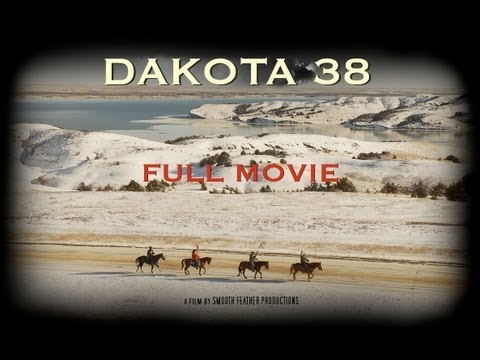
Watch this video on YouTube
Dakota 38, Documentary Directed By Silas Hagerty from Smooth Feather Productions, 2012
Miller hadn’t even heard about the hanging at Mankato before this dream, but once he put his mind to starting the ride, the direct descendant of Little Horse, one of the 38, was joined by other Dakota descendants. The film makes it clear that the journey isn’t only about remembering those 38 Dakota men; it’s also about healing, reconciliation and getting back to traditional ways.
In Dakota 38, Mikey Peters, great-grandson of Medicine Bottle, tells of the importance of the horse. Dakota belief says that it represents the sacred six directions, without which healing is impossible. The front legs symbolize west and north, the back legs, east and south. The head and ears point toward Wakatahe [the heavens], and the tail anchors all to Mother Earth.
“When you put those six directions together it creates a sacred center to bring Wowakan—it’s a sacredness that you can only have with these six directions. And you can pray while you’re on your horse.” Peters says in the film. “Some people can remember things that ancestors went through. It’s the horse leading the way because of its healing power.”
In the film, there is a rider-less paint horse. A year after the execution of the 38, Sitting Bull rode on horseback to see the concentration camps in South Dakota. He said that his people were housed worse than animals. Miller believes that Sitting Bull and Crazy Horse were present on the journey to the hanging site, and offered the paint as their mount.
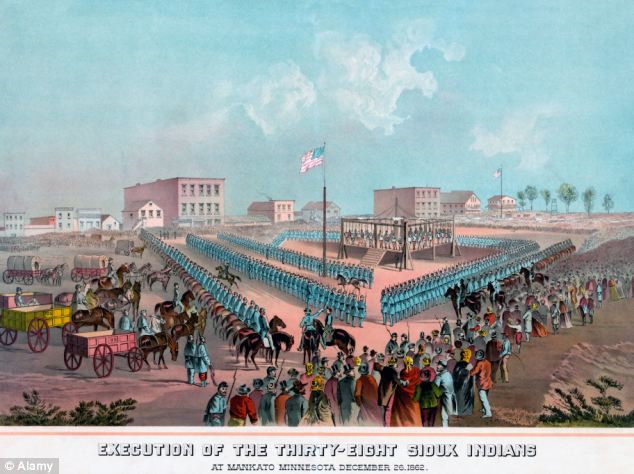

The ‘Dakota 38’ were executed at the end of the US-Dakota war, which took place along the Minnesota River in the autumn of 1862.
The Native Dakota [Santee Sioux] people had ceded 24 million acres of land in Minnesota to the US government in one of the most significant Indian treaties in history, signed in 1851. Such treaties were instrumental in opening the American west to European settlement.
In exchange, they were promised reservation lands and $3,075,000, to be paid over a 50-year period in annuities of goods and money. This came to about 12 cents an acre for some of the richest agricultural land in the country.
The treaties were later amended to weaken the position of the 7,000 Dakota, who were left with just two reservations, each 20 miles wide and about 70 miles long.Delayed and skipped payments drove the Native Americans to increasing desperation.
On August 17, 1862, one young Dakota with a hunting party of three others killed five settlers while on a hunting expedition. That night a council of Dakota decided to attack settlements throughout the Minnesota River valley to try to drive whites out of the area. There has never been an official report on the number of settlers and Natives killed.
The conflict launched a series of Indian wars on the northern plains that did not end until 1890.
On November 5, 1862 in Minnesota, in courts-martial, 303 Dakota were found guilty of rape and murder of hundreds of settlers. They were sentenced to be hanged. No attorneys or witness were allowed as a defense for the accused, and many were convicted in less than five minutes of court time with the judge.
President Abraham Lincoln commuted the death sentence of 284 of the warriors, while signing off on the execution of 38 Dakota men by hanging on December 26, 1862 in Mankato, Minnesota. It was the largest mass-execution in U.S. history.
Those spared were sent from a prison in Mankato to one in Davenport, Iowa, where many died from squalid conditions. A further 1,600 Dakota were held at a concentration camp at Fort Snelling until being sent out of Minnesota, and virtually all others fled the state. Thus the US Congress abolished their reservations.
via Indian Country Today Media Network
Updated 1 January 2022



